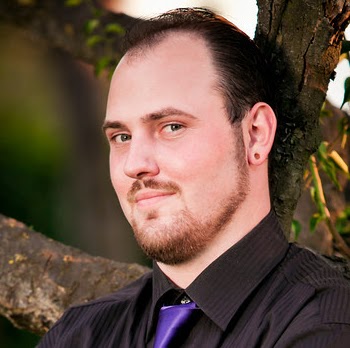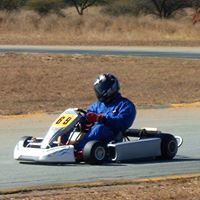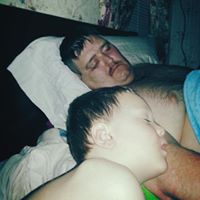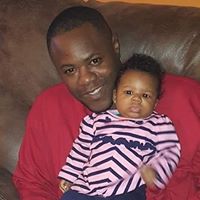Kenneth W Cowan
age ~45
from Redondo Beach, CA
- Also known as:
-
- Kenneth Cowan Cowan
- Kenneth M Cowan
- Kacey Cowan
- Kennth Cowan
- Ken Cowan
- Kenneth Cowen
- Phone and address:
- 124 Palos Verdes Blvd APT 3, Redondo Beach, CA 90277
Kenneth Cowan Phones & Addresses
- 124 Palos Verdes Blvd APT 3, Redondo Beach, CA 90277
- Santa Monica, CA
- Seattle, WA
- Los Angeles, CA
- Brandon, MS
- Venice, CA
- Pittsford, NY
- Durham, NH
- 11100 SE Petrovitsky Rd APT F3, Renton, WA 98055
Work
-
Position:Executive, Administrative, and Managerial Occupations
Education
-
Degree:High school graduate or higher
Specialities
Bankruptcy • Civil Litigation • Business & Contract Matters • Commercial/Financial Law • Family Law • Injury Cases • Real Estate • Construction Law • Transportation Law • Wills • Estates • Probate Law
Lawyers & Attorneys

Kenneth Cowan - Lawyer
view sourceSpecialties:
Bankruptcy
Civil Litigation
Business & Contract Matters
Commercial/Financial Law
Family Law
Injury Cases
Real Estate
Construction Law
Transportation Law
Wills
Estates
Probate Law
Civil Litigation
Business & Contract Matters
Commercial/Financial Law
Family Law
Injury Cases
Real Estate
Construction Law
Transportation Law
Wills
Estates
Probate Law
ISLN:
908154720
Admitted:
1983
University:
University of Arkansas, B.A., 1980
Law School:
University of Arkansas, J.D., 1983
Us Patents
-
Rfid-Based Sensing Of Changed Condition
view source -
US Patent:20140049377, Feb 20, 2014
-
Filed:Oct 28, 2013
-
Appl. No.:14/064515
-
Inventors:Isabelle Banville - Newcastle WA, US
Joseph Leo Sullivan - Kirkland WA, US
David Peter Finch - Bothell WA, US
Daniel Ralph Piha - Bellevue WA, US
Laura Marie Gustavson - Redmond WA, US
Kenneth Frederick Cowan - Kirkland WA, US
Richard C. Nova - Seattle WA, US
Carmen Ann Chacon - Vashon WA, US
Gregory T. Kavounas - Bellevue WA, US -
Assignee:Physio-Control, Inc. - Redmond WA
-
International Classification:G06K 7/10
-
US Classification:340 101
-
Abstract:RFID-based sensors, RFID readers and software sense a changed condition. In one embodiment, an RFID-based sensor includes a base that may be placed at a location where a condition may change. The sensor includes an RFID tag that is coupled to the base. The sensor also includes a detector that can be electrically coupled to the RFID tag. If the condition changes, an electrical property of the detector also changes, impacting an operation of the RFID tag. The impacted operation can be detected by an RFID reader/interrogator so as to provide a notification. An advantage over the prior art is that the condition change can be sensed wirelessly over a domain that can be laborious or hazardous to access otherwise. Moreover, RFID based sensors can be made by modifying common RFID tags.
-
Detecting Loss Of Full Skin Contact In Patient Electrodes
view source -
US Patent:20140051962, Feb 20, 2014
-
Filed:Oct 28, 2013
-
Appl. No.:14/064468
-
Inventors:Isabelle Banville - Newcastle WA, US
Joseph Leo Sullivan - Kirkland WA, US
David Peter Finch - Bothell WA, US
Daniel Ralph Piha - Bellevue WA, US
Laura Marie Gustavson - Redmond WA, US
Kenneth Frederick Cowan - Kirkland WA, US
Richard C. Nova - Seattle WA, US
Carmen Ann Chacon - Vashon WA, US
Gregory T. Kavounas - Bellevue WA, US -
Assignee:Physio-Control, Inc. - Redmond WA
-
International Classification:A61B 5/0424
A61N 1/04
A61B 5/00 -
US Classification:600386
-
Abstract:Patient electrodes, patient monitors, defibrillators, wearable defibrillators, software and methods may warn when an electrode stops being fully attached to the patient's skin. A patient electrode includes a pad for attaching to the skin of a patient, a lead coupled to the pad, and a contact detector that can change state, when the pad does not contact fully the skin of the patient. When the detector changes state, an output device may emit an alert, for notifying a rescuer or even the patient.
-
Controlling Functions Of Wearable Cardiac Defibrillation System
view source -
US Patent:20220313989, Oct 6, 2022
-
Filed:Jun 23, 2022
-
Appl. No.:17/847680
-
Inventors:- Grand Cayman, KY
Erick Michael Roane - Kirkland WA, US
Laura Marie Gustavson - Redmond WA, US
Kenneth F. Cowan - Everett WA, US
Robert Reuben Buchanan - Bothell WA, US
Daniel James Finney - Woodinville WA, US
Jason W. Fouts - Bothell WA, US
Gregory T. Kavounas - Bellevue WA, US -
Assignee:West Affum Holdings Corp. - Grand Cayman
-
International Classification:A61N 1/08
A61N 1/39
A61B 5/00
A61B 5/332 -
Abstract:A Wearable Cardiac Defibrillator (WCD) system is configured to be worn by a patient who carries a mobile communication device. The mobile communication device has a user interface that is configured to enable the patient to enter wireless inputs. The WCD system includes a communication module that is configured to establish a local comlink with the mobile communication device. The WCD system also includes a tethered action unit that has a user interface configured to enable the patient to enter action inputs. The WCD system can perform some of its functions in response to the action inputs or to the wireless inputs. Since the wireless inputs can be provided from the mobile communication device instead of the action unit, the patient is less likely to attract attention when entering them, and thus exhibit better compliance.
-
Wearable Medical Device (Wmd) Implementing Adaptive Techniques To Save Power
view source -
US Patent:20220296909, Sep 22, 2022
-
Filed:Feb 28, 2022
-
Appl. No.:17/682245
-
Inventors:- Grand Cayman, KY
Erick M. Roane - Bellevue WA, US
Kenneth F. Cowan - Kirkland WA, US
Derek J. Valleroy - Seattle WA, US
Gregory T. Kavounas - Bellevue WA, US -
Assignee:West Affum Holdings Corp. - Grand Cayman
-
International Classification:A61N 1/39
A61B 5/024
A61N 1/04
A61B 5/30
A61B 5/282
A61B 5/364 -
Abstract:A wearable cardioverter defibrillator (WCD) comprises a plurality of electrocardiography (ECG) electrodes and a plurality of defibrillator electrodes to contact the patient's skin when the WCD is delivering therapy to the patient, a preamplifier coupled to the ECG electrodes to obtain ECG data from the patient. a processor to receive the ECG data from the preamplifier, and a high voltage subsystem to provide a defibrillation voltage to the patient through the plurality of defibrillator electrodes in response to a shock signal received from the processor. In a first power mode of a range of power modes the preamplifier is configured to perform low-fidelity ECG acquisition and the processor is configured to perform simple arrythmia detection analysis, and in a second mode of the range of power modes the preamplifier is configured to perform high-fidelity ECG acquisition and the processor is configured to perform complex arrythmia detection analysis.
-
Multi-Function Wearable Monitoring System With Sleep Disorder Warning
view source -
US Patent:20230071214, Mar 9, 2023
-
Filed:Sep 2, 2022
-
Appl. No.:17/902508
-
Inventors:- Grand Cayman KY, US
Joseph Sullivan - Kirkland WA, US
Kenneth Cowan - Kirkland WA, US
Korine Haynes - Woodinville WA, US
Regina New - Henrico VA, US
Laura Gustavson - Redmond WA, US
Phillip Foshee, Jr. - Woodinville WA, US -
International Classification:A61B 5/00
A61B 5/0205 -
Abstract:A wearable medical monitoring system is provided that includes a support structure worn by a patient, which also housing electrodes and sleep sensors for generating health data. The health data includes ECG data, respiration data, and sleep data, which are used to determine cardiac conditions and sleep disorders. Sleep disorder indexes are formulated with various combinations of sleep factors from the health data of the patient, correlating in time with particular periods of sleep by the patient. In comparing the sleep disorder indexes with respective sleep disorder indicators, potential sleep disorders may be discerned by the monitoring system. Sleep information about the sleep disorders and warnings may be transmitted by the monitoring system to health support entities.
-
Wearable Cardioverter Defibrillator (Wcd) System Measuring Patient's Respiration
view source -
US Patent:20210322759, Oct 21, 2021
-
Filed:Jun 30, 2021
-
Appl. No.:17/364357
-
Inventors:- Grand Cayman, KY
Kenneth Frederick Cowan - Redmond WA, US -
Assignee:West Affum Holdings Corp. - Grand Cayman
-
International Classification:A61N 1/04
A61B 5/00
A61B 5/0205
A61N 1/39 -
Abstract:A wearable cardioverter defibrillator (“WCD”) system may include an impedance detector configured to render an impedance signal of the patient. The WCD system may determine, from the impedance signal, a characteristic of breathing by the patient that can be used as a vital sign. The WCD system may determine, from at least the breathing characteristic, whether or not a shock criterion is met. If the shock criterion is met, the WCD system may control a discharge circuit to discharge a stored electrical charge through the patient. An advantage can be that the breathing characteristic may be used to determine whether or not a patient is experiencing a condition that requires defibrillation therapy, such as sudden cardiac arrest. Even more advantages can be had in discerning the state of the patient when the breathing characteristic is combined with other data, such as from a motion detector.
-
Wearable Cardiac Defibrillator (Wcd) System Controlling Conductive Fluid Deployment
view source -
US Patent:20200121938, Apr 23, 2020
-
Filed:Dec 17, 2019
-
Appl. No.:16/717566
-
Inventors:- Grand Cayman, KY
Joseph Leo Sullivan - Kirkland WA, US
Daniel Peter Finch - Bothell WA, US
Isabelle Banville - Newcastle WA, US
Laura Marie Gustavson - Redmond WA, US
Kenneth Frederick Cowan - Kirkland WA, US
Richard C. Nova - Seattle WA, US
Robert Reuben Buchanan - Bothell WA, US
Krystyna Szul - Seattle WA, US
Gregory T. Kavounas - Bellevue WA, US -
Assignee:West Affum Holdings Corp. - Grand Cayman
-
International Classification:A61N 1/39
A61N 1/04
A61N 1/362 -
Abstract:In some embodiments, a wearable medical device system includes a processor configured to determine whether a patient requires electrical therapy to be provided via a plurality of therapy electrodes, the electrical therapy comprising discharging at least a portion of a stored electrical charge from an energy storage module, and if so, cause a fluid deploying mechanism to deploy a portion of the stored fluid to an interface between at least two therapy electrodes and the patient's skin prior to providing the electrical therapy, the deployed portion of fluid adapted to decrease the impedance measured by an impedance measurement circuit, and cause the fluid deploying mechanism to deploy an additional portion of fluid in response to the impedance measured by the impedance measurement circuit increasing above a threshold during the electrical therapy.
-
Wearable Medical Device (Wmd) Implementing Adaptive Techniques To Save Power
view source -
US Patent:20200069953, Mar 5, 2020
-
Filed:Jun 26, 2019
-
Appl. No.:16/453488
-
Inventors:- Grand Cayman, KY
Erick M. Roane - Bellevue WA, US
Kenneth F. Cowan - Kirkland WA, US
Derek J. Valleroy - Seattle WA, US
Gregory T. Kavounas - Bellevue WA, US -
International Classification:A61N 1/39
A61B 5/0428
A61B 5/0408
A61B 5/0468
A61N 1/04
A61B 5/024 -
Abstract:A wearable cardioverter defibrillator (WCD) comprises a plurality of electrocardiography (ECG) electrodes and a plurality of defibrillator electrodes to contact the patient's skin when the WCD is delivering therapy to the patient, a preamplifier coupled to the ECG electrodes to obtain ECG data from the patient. a processor to receive the ECG data from the preamplifier, and a high voltage subsystem to provide a defibrillation voltage to the patient through the plurality of defibrillator electrodes in response to a shock signal received from the processor. In a first power mode of a range of power modes the preamplifier is configured to perform low-fidelity ECG acquisition and the processor is configured to perform simple arrythmia detection analysis, and in a second mode of the range of power modes the preamplifier is configured to perform high-fidelity ECG acquisition and the processor is configured to perform complex arrythmia detection analysis.
Name / Title
Company / Classification
Phones & Addresses
WIRENET, INC
SHOREMEN PROPERTIES, LLC
OLYMPUS COMMUNICATIONS, INC
K.D. COWAN, INC
AMERICAN PAYROLL SOLUTIONS, INC
President
MESA VERDE RESEARCH, INC
Computer Consulting · Computer Repair
Computer Consulting · Computer Repair
2740 Canary Dr, Costa Mesa, CA 92626
(714)4346470
(714)4346470
Isbn (Books And Publications)

Medicine Doctors

Kenneth H. Cowan
view sourceSpecialties:
Hematology/Oncology, Internal Medicine
Work:
UNMC Physicians Group
986805 Nebraska Medical Ctr, Omaha, NE 68198
(402)5594238 (phone), (402)5594652 (fax)
UNMC PhysiciansNebraska Medicine Peggy D Cowdery Patient Care Center
4400 Emile St, Omaha, NE 68198
(402)5595600 (phone), (402)5594835 (fax)
986805 Nebraska Medical Ctr, Omaha, NE 68198
(402)5594238 (phone), (402)5594652 (fax)
UNMC PhysiciansNebraska Medicine Peggy D Cowdery Patient Care Center
4400 Emile St, Omaha, NE 68198
(402)5595600 (phone), (402)5594835 (fax)
Education:
Medical School
Case Western Reserve University School of Medicine
Graduated: 1975
Case Western Reserve University School of Medicine
Graduated: 1975
Procedures:
Chemotherapy
Conditions:
Malignant Neoplasm of Female Breast
Anemia
Breast Neoplasm, Malignant
Iron Deficiency Anemia
Kidney Cancer
Anemia
Breast Neoplasm, Malignant
Iron Deficiency Anemia
Kidney Cancer
Languages:
English
Description:
Dr. Cowan graduated from the Case Western Reserve University School of Medicine in 1975. He works in Omaha, NE and 1 other location and specializes in Hematology/Oncology and Internal Medicine. Dr. Cowan is affiliated with Nebraska Medical Center.
Resumes

Kenneth Cowan
view source
Kenneth Cowan
view source
Kenneth Cowan
view source
Kenneth Cowan
view source
Kenneth Cowan
view source
Kenneth Cowan
view source
Kenneth Cowan
view source
Kenneth Cowan
view sourceSkills:
Microsoft Excel
Microsoft Office
Customer Service
Microsoft Office
Customer Service
Googleplus

Kenneth Cowan
Work:
Sea Crest Home Health & Hospice - Operations Manager (2010)

Kenneth Cowan

Kenneth Cowan

Kenneth Cowan

Kenneth Cowan

Kenneth Cowan

Kenneth Cowan

Kenneth Cowan
Myspace

Kenneth Cowan
view source
Kenneth Cowan
view source
Kenneth Cowan
view source
Kenneth F. Cowan
view source
Kenneth Cowan
view source
Kenneth Cowan
view source
Kenneth Cowan
view source
Kenneth Cowan
view sourceClassmates

Kenneth Cowan
view sourceSchools:
Elwood Secondary High School Melbourne Australia 1963-1967

Kenneth Cowan
view sourceSchools:
Tunstall Middle School Dry Fork VA 1961-1965
Community:
Jean Bradner, Payton Osborne, Jasmine Correll, Danielle Stroud, Robert Tucker

Kenneth Cowan
view sourceSchools:
Council Training High School Huntsville AL 1966-1970
Community:
Geraldine Jack, Jake Pope

Kenneth Cowan
view sourceSchools:
Dadeville High School Dadeville MO 1973-1985
Community:
Jim Hudson, Blaine Means, David Medley, Anita Vance, John Sherwood, Roger Cole, Sherry Cowan, Rita Hall, Steve Hensley, Connie Killingsworth

Kenneth Cowan
view sourceSchools:
Jersey City Public School 11 Jersey City NJ 1935-1939
Community:
Irene Kolster, Geraldine Rubano, Audrey Schalk, Constance Truise, Joseph Meaney, Luz Villasana, Joe Fahey, Shakeria Moreland, Elaine Kraut, Maria Bautista

Kenneth Cowan
view sourceSchools:
North High School Olathe KS 1993-1997
Community:
Brent Upton, Dora Turner, Sharon Owens, Jaime Parker, Kevin Linden, Mindi Bruce, James Donald, Jessica Perry, Rachel Senay

Kenneth Cowan
view sourceSchools:
Adairville High School Adairville KY 1966-1970
Community:
Hal Mathews, Nathaniel Spaulding, Terry Mason, Theresa Smith, Lynn Bertram, Dianna Wix, Vicki Costello, Bonnie Lawrence, Donna Russell, Carol Ross

Kenneth Cowan, Griffin Hi...
view sourceYoutube
Plaxo

Kenneth Cowan
view sourceGet Report for Kenneth W Cowan from Redondo Beach, CA, age ~45










